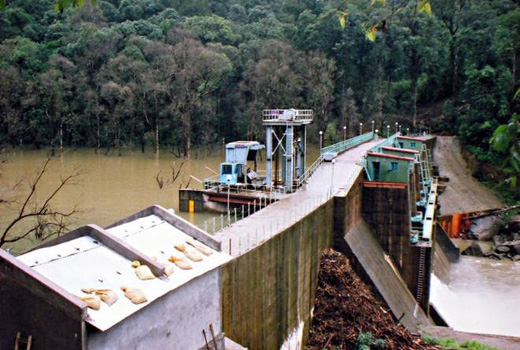
Freshwater fish endangered by small hydropower projects, study
Mangalore Today News Network
Mangaluru, June 05, 2018: A scientific study conducted in the upper reaches of river Nethravathi, which is a part of the Western Ghats biodiversity hotspot. Revealing Small Hydropower Projects (SHPs), despite being promoted as clean energy, these plants have significant ecological impacts, and cause alterations in stream geometry, water quality and freshwater fish species.

The study, published recently in the journal Aquatic Conservation, was conducted by scientists from Wildlife Conservation Society – India Programme (WCS-India Programme), National Centre for Biological Sciences, Bengaluru, Ashoka Trust for Research in Ecology and the Environment, and Foundation for Ecological Research Advocacy and Learning (FERAL).
In the study, two dammed tributaries and one undammed tributary of the west flowing Netravathi river were selected.
It was found that the SHPs affected the river flow by reducing flow immediately below the dam, and also caused flow fluctuation when the water was released back into the river after power generation – both of which have consequences on fish assemblages. The dammed streams altered the fish composition and reduced the number of species.
The SHPs are made up of four main components – a diversion weir (this blocks the river’s flow and creates a reservoir), a powerhouse with turbines, a penstock pipe and a tailrace canal.
The water diverted at the weir passes through the pipes to the powerhouse to produce electricity. Water is then released back into the river further downstream through its tailrace canal.
Explaining the results, Suman Jumani, the lead author said, “Our study was one of the first to holistically assess the impacts of SHPs in the forested regions of the Western Ghats. Ecologically, SHPs severely altered river geometry, water quality, and freshwater fish species assemblages. Since they divert water for long distances, it leaves vast stretches of the river almost completely devoid of water flow in the dry season. Water in these stretches had lower oxygen levels and higher water temperature. Not surprisingly, these habitat alterations strongly affected freshwater fish assemblages.”
It was also found that the dammed streams had more generalist species of fish (those that are widespread and can survive in harsh environments) compared to specialist species (those that are unique to certain rivers).
They also had reduced numbers of migratory fish such as the Mahseer.
It was also found that the native species were strongly affected, which is a matter of grave concern since these local species are found only in the Western Ghats and hence are under threat of being driven to extinction, the study revealed.
Multiple SHPs set up in close proximity on the same river have affected both the water quality and habitat.
For example, 10 SHPs currently exist on the 108-km long west-flowing Nethravathi river and an additional 44 SHPs have been proposed on the same stretch and this could have a deleterious impact on the ecosystem.
Currently, a new SHP is being constructed on Hongadhahalla, the only free-flowing tributary in the area. Most of the others are also being dammed and diverted as part of the Yettinahole drinking water project.
“Given that this region is an important watershed and a part of Western Ghats biodiversity hotspot, there is an urgent need to monitor, regulate and carefully evaluate the impacts of large-scale infrastructure development,” said Shishir, co-author.
Suman added, “Despite mounting evidence, the Ministry of New and Renewable Energy has plans to build about 6,500 additional SHPs without any environmental and social regulations. Given that most of these planned dams are located within biodiversity hotspots of the Western Ghats and the Himalayas, it is imperative that the policy concerning these projects be revised to include mandatory minimum flow requirements and individual and cumulative environmental impact assessments.”